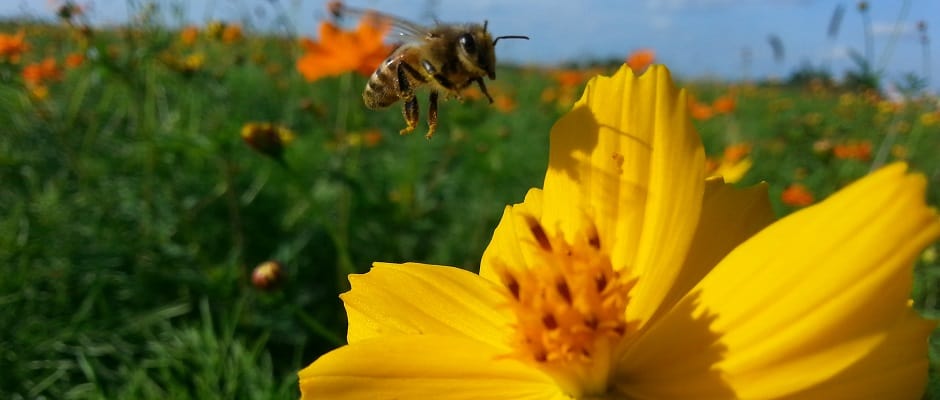Share this article
Blooming buds and busy bees: How to prepare hives for spring
Spring brings a multitude of color and warmth into the environment, and for me personally, a beekeeper, spring means active honey bees and the promise of another exciting year of beekeeping. Integrated Pest Management (IPM) and spring hive maintenance involves varroa mite monitoring and control, splitting hives, controlling swarms and establishing a baseline of each hive’s health after winter.
Varroa mite, known as Varroa destructor, is the number one pest concern for beekeepers. This parasite sucks the bee’s haemolymph and vectors multiple viruses and diseases. Establishing the habit of monitoring mites is key to successful beekeeping. Once a beekeeper has accurate records of their mite levels they can decide whether or not a chemical treatment is needed before spring season is fully underway and the honey bees are eagerly collecting nectar and producing honey.
Several varroa mite monitoring methods exist, and you can find many of them in the Honey Bee Health Collation’s varroa management guide, an essential resource on monitoring for varroa. I find the alcohol wash method the most accurate. Collecting a sample of about 300 bees (equivalent to ½ cup) on a frame of mixed brood (without the queen) in a standard zip top bag and washing the bees in rubbing alcohol or windshield washer fluid will dislodge the mites from the bees and allow for an accurate count of mites/100 bees. Typically you want to see less than three-five mites per 100 bees; otherwise, a chemical treatment will be needed to control the mite population. Always refer to product label directions before applying any chemical treatment into the hives. The Varroa EasyCheck sampling collection cup sold by retailers like Brushy Mountain Bee Supply has become my go-to tool in the field when monitoring for varroa mites.
After monitoring, preparing to split robust hives is a great way to replace any hives that may have been lost over winter and to prevent potential swarming. Splitting hives most often involves an extra nuc (small five frame starter hive) or hive body (full 10 frame hive). To split the hive, the beekeeper takes half the bees and frames with either young eggs and/or queen cells and places it into the new nuc or hive body, while the remaining queen and other half of the bees stay in the original hive, creating two new colonies.
The reproduction of hives occurs naturally by means of swarming, when one healthy colony simply splits themselves into two. Most often swarming happens in early spring, when the hive is getting too full. The bees come together, raising a new queen to remain with the original colony, while half of the hive population takes off with the old queen. Splitting and swarming can also be part of IPM in varroa mite control. When colonies are reduced in size and the queen’s normal egg laying pattern is interrupted, in turn the varroa mite population reproduction is also interrupted.
Performing colony health assessments is the third and final step for not only spring but also overall hive management. Assessing the status of the queen, stages of development of new bees and food stores are all key areas to cover. A tool like the Healthy Colony Checklist is one of my go to resources for condition assessments.
Bayer Bee Care is a Strategic Partner of The Wildlife Society.
Header Image: ©Bayer Bee Care








